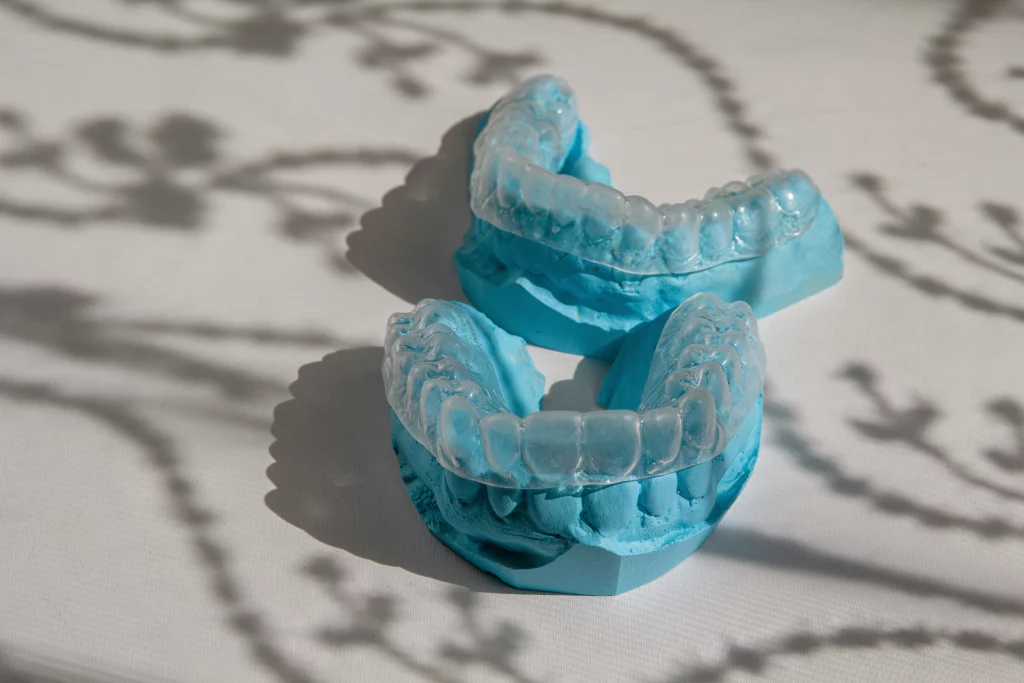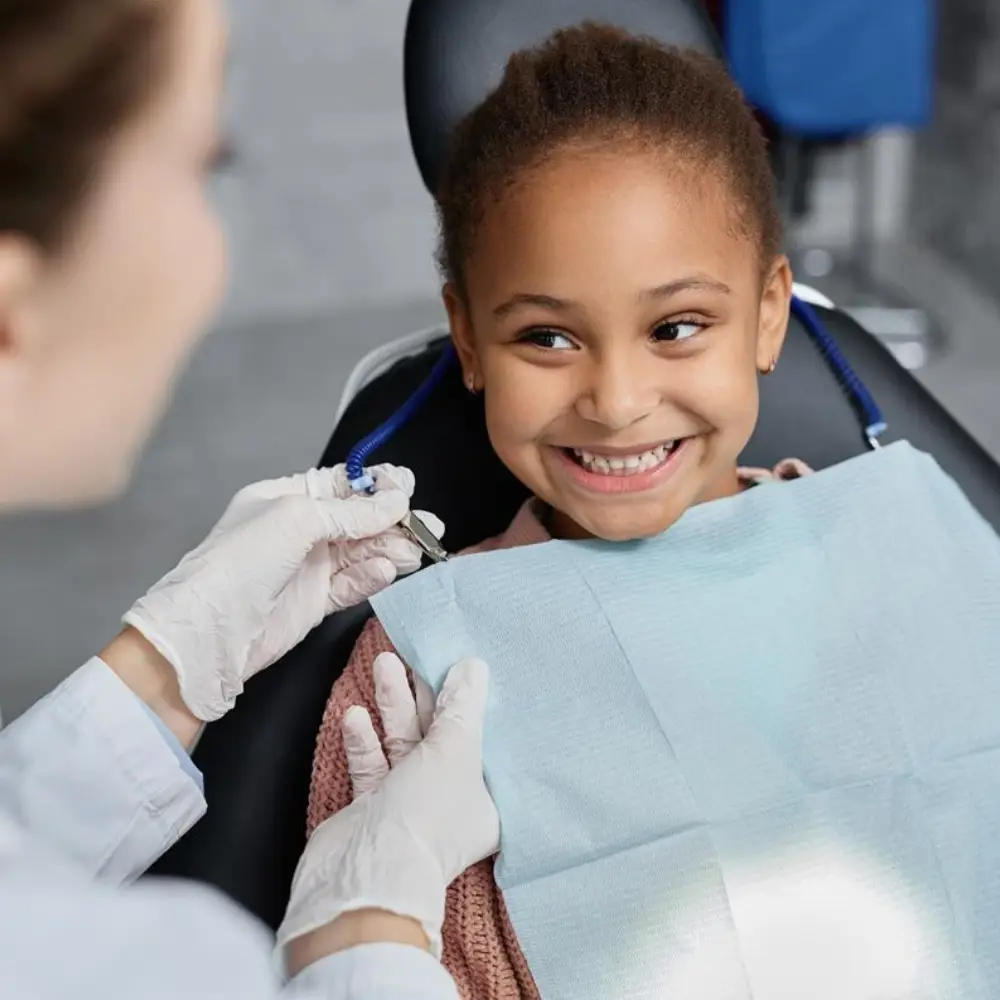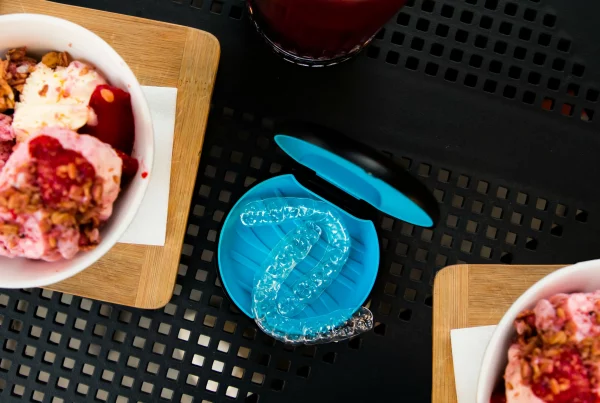Invisalign represents a contemporary solution for individuals dealing with dental crowding, offering an alternative to traditional brackets and wires. These clear, removable aligners provide a discreet and adaptable method for enhancing dental alignment, thereby minimizing disruptions to everyday activities. Utilizing advanced digital imaging, Invisalign aligners are custom-fabricated, allowing for precise treatment planning and reliable outcomes. This is particularly well-suited for addressing mild to moderate crowding, effectively resolving both aesthetic and functional issues with added comfort and convenience. Throughout the treatment process, patients benefit from ongoing professional oversight to track progress and make necessary adjustments.
This article will examine the suitability of Invisalign for crowded teeth, delineate the phases of treatment, compare Invisalign with conventional braces, and outline typical costs. Additionally, expert recommendations from Graham Park Dental will be included to help facilitate a successful and streamlined treatment experience.
Invisalign Benefits for Dental Crowding

Invisalign represents a significant advancement in the management of dental crowding, offering benefits that extend beyond mere aesthetics. Unlike conventional fixed appliances, clear aligners provide a discreet and removable alternative, allowing patients to maintain typical eating and oral hygiene routines with minimal disruption. The reduced frequency of required office visits enhances convenience and accommodates modern lifestyles. Moreover, Invisalign not only addresses the alignment of crowded dentition but also contributes to improved occlusion and overall oral function. This exemplifies a patient-centered approach, making orthodontic treatment both accessible and adaptable to individual needs.
Why Invisalign Works Well for Mild to Moderate Crowding
Dental crowding arises when insufficient space causes teeth to overlap or tilt out of alignment. Invisalign addresses this issue by utilizing a series of custom-designed trays that apply gentle, incremental pressure to reposition each tooth and gradually create adequate spacing. For patients with mild to moderate crowding, aligners can yield reliable improvements, especially due to recent advancements in 3D modeling and force distribution planning. Prior to initiating treatment, G&P Dental conducts a thorough evaluation of each patient’s occlusion and periodontal health, ensuring that crowding correction is both safe and effective.
How Invisalign Aligners Shift Crowded Teeth Gently
Each aligner tray is specifically designed to exert gentle, controlled pressure on designated teeth—eliminating the need for traditional wires or brackets. Patients are typically instructed to wear the aligners for 20–22 hours daily, allowing a gradual and precise adjustment of tooth position over time. In comparison to conventional braces, aligners tend to distribute force more evenly across the dental arch, which can help minimize discomfort. Furthermore, aligners generally do not interfere with speech or eating habits, supporting their suitability for daily use.
Aesthetic Advantages of Clear Aligners Over Braces
Invisalign aligners offer a discreet alternative to traditional braces, allowing individuals to undergo orthodontic treatment without drawing unnecessary attention. The absence of brackets and wires eliminates common sources of discomfort and reduces the likelihood of irritation to the lips or cheeks. Furthermore, daily oral hygiene such as brushing and flossing is notably more convenient with removable aligners. As a result, this treatment modality is particularly advantageous for professionals, students, or anyone seeking a subtle, unobtrusive approach to teeth straightening.
Invisalign Treatment Process for Crowded Teeth
Addressing dental crowding with Invisalign is a customized process, structured in sequential stages to enhance both accuracy and patient comfort. Invisalign treatment accommodates a spectrum of crowding severity, from minor misalignments to more complex cases. The clear aligners offer a discreet alternative to traditional braces, promoting both aesthetic appeal and predictability in outcomes. Each phase of the protocol is supervised by a dental specialist to ensure optimal results throughout the course of treatment.
What to Expect During the Initial Consultation
At your initial appointment, a thorough evaluation of your dental history, tooth alignment, and bite is conducted. At Graham Park Dental, advanced technology such as intraoral scans and X-rays is utilized to digitally map and strategize tooth movement. Additionally, you will discuss your expectations, potential use of attachments, and how Invisalign treatment can be adapted to your daily routine.
How Custom Aligners Are Designed for Your Smile
The Invisalign process begins with specialized software that meticulously plans each stage of tooth movement necessary to achieve the intended alignment. Following this digital mapping, aligner trays are fabricated from BPA-free materials and sequentially labeled to ensure proper usage order. During the delivery appointment, the dentist evaluates the fit and comfort of the aligners, making adjustments as needed. Additional attachments may be applied at this stage to enhance the trays’ retention and effectiveness.
Tracking Progress and Adjustments Over Time
Patients can generally expect follow-up appointments every six to eight weeks, during which dental professionals will assess progress, reinforce recommended oral hygiene practices, and provide new aligner trays as needed. In cases where minor gaps persist or subtle adjustments are necessary, Graham Park Dental may initiate additional refinements to the treatment plan. Timely interventions facilitate continued improvement, and consistent professional oversight helps ensure both optimal results and patient confidence throughout the process.
Invisalign vs. Braces for Crowded Teeth
Both Invisalign and traditional braces are effective solutions for correcting dental crowding, yet selecting the most suitable option largely depends on individual lifestyle, comfort preferences, and the complexity of the dental case. Traditional braces utilize metal brackets and wires to realign teeth, representing a visible and conventional approach, while Invisalign employs a series of clear, removable aligners that offer a more discreet alternative. Each method presents distinct advantages and drawbacks regarding aesthetics, maintenance requirements, and duration of treatment. Careful consideration of these differences is essential to making an informed decision that aligns with one’s personal needs and daily routine.
Effectiveness of Invisalign Compared to Traditional Braces
Research indicates that Invisalign addresses mild to moderate crowding almost as efficiently as braces, provided instructions are followed closely. Graham Park Dental observes completion rates of around 90% in appropriate candidates. Crowded cases needing tooth rotation or vertical movements may still be suitable for aligners but require careful planning.
Treatment Time Differences for Each Option
Typically, braces require approximately 18 to 24 months to resolve dental crowding, while Invisalign treatment tends to be somewhat quicker, often concluding within 12 to 18 months. A advantage of Invisalign lies in its advanced planning: patients are able to review a detailed, customized treatment timeline and projected outcomes from the outset, which provides clear expectations regarding both duration and final results.
Comfort and Lifestyle Considerations
Invisalign provides noticeably greater comfort, as there are no brackets to cause irritation inside the mouth. The aligners can be removed during meals, which makes eating and oral hygiene routines significantly more manageable. This degree of flexibility often results in higher patient adherence to the treatment plan and reduces the likelihood of emergency visits for repairs, as compared to traditional braces. Overall, the treatment process tends to be less disruptive to daily life.
Invisalign Cost for Crowded Teeth

The cost of Invisalign for individuals with crowded teeth is influenced by several factors, including the severity of dental misalignment, anticipated treatment duration, and geographic location of the dental provider. Typically, Invisalign pricing aligns with that of conventional braces; however, Invisalign is often preferred for its discreet appearance and increased comfort. Many dental practices accommodate patients through flexible payment plans or financing options, thereby making orthodontic treatment more attainable. An awareness of these variables can assist prospective patients in making informed financial preparations for achieving improved dental alignment.
Factors That Influence Invisalign Price
The total cost of Invisalign treatment varies considerably, especially when addressing dental crowding. Several elements influence pricing: the degree of crowding, the number of aligners required, anticipated treatment duration, and the practitioner’s level of expertise. Additionally, supplementary interventions—such as attachments, refinements, or post-treatment retainers—may contribute to overall expenses. A comprehensive understanding of these factors enables patients to anticipate costs more accurately and make informed comparisons between treatment options.
Is Invisalign More Affordable Than Braces?
When weighing Invisalign against traditional braces, cost is a common concern. In many cases, the two treatments are similarly priced especially for mild to moderate crowding. However, factors like treatment complexity, location, and insurance coverage can tip the scale one way or the other. While Invisalign offers added convenience and aesthetics, braces may be more cost-effective for complex cases. Understanding the full scope of each option helps you choose what’s best for your smile and budget.
Insurance and Payment Options at Graham Park Dental
Our team facilitates the verification of orthodontic insurance benefits and provides guidance on flexible financing solutions. We collaborate with lending partners who extend interest-free payment plans for up to twelve months. Additionally, many patients opt to supplement these arrangements by utilizing flexible spending accounts or dental savings plans, thereby alleviating potential financial burdens associated with orthodontic treatment.
Frequently Asked Questions (FAQs)
1. Does Invisalign work for severe crowding?
Invisalign treats mild to moderate dental crowding most effectively by gradually shifting teeth into better alignment using clear, removable trays. For more severe cases, additional techniques such as interproximal reduction (slimming between teeth), selective extractions, or a hybrid plan that includes braces—may be necessary. These steps help create space and improve outcomes when crowding is too advanced for aligners alone. At Graham Park Dental, your dentist will perform a thorough evaluation using digital imaging and bite analysis to understand the complexity of your case. Based on this assessment, they’ll recommend whether Invisalign by itself is suitable or if complementary treatments are needed. This personalized approach ensures the treatment plan aligns with your goals, comfort, and long-term dental health.
2. How long does Invisalign take to fix crowded teeth?
Typically, Invisalign treatment for crowded teeth spans 12 to 18 months, though minor cases may be completed in less than a year. The exact duration depends on the severity of the crowding and how well your teeth respond to each set of aligners. Your dentist will provide a personalized timeline after a full evaluation and digital scan. Staying on schedule with tray changes, usually every one to two weeks, is key to maintaining steady progress. Consistently wearing your aligners for 20 to 22 hours per day also plays a critical role in achieving results on time. Delays in wear or skipped trays can prolong treatment and affect outcomes.
3. Is Invisalign more comfortable than braces for crowding?
Yes, Invisalign is generally considered more comfortable than traditional braces. Without any metal brackets or wires, the clear trays are smooth and gentle against the lips, cheeks, and gums. Most patients experience mild pressure or tightness for a day or two when switching to a new set of aligners, but this is usually manageable and short-lived. Unlike braces, there are no sharp edges or wire adjustments that can irritate soft tissues. The soft, custom-fit design of Invisalign makes it easier to speak, eat, and maintain oral hygiene throughout treatment. For many people, this comfort and convenience make the overall experience far more pleasant.
4. Can I see a digital preview of my smile before starting?
Yes, Invisalign offers a digital preview of your results through its ClinCheck 3D simulation. This advanced tool lets you see how your teeth are expected to move and what your smile could look like at the end of treatment. Being able to review the projected outcome in advance helps patients feel more confident and informed. It also allows for adjustments based on your functional needs or cosmetic preferences before treatment even starts. This visual roadmap fosters transparency, encourages accountability, and keeps both patient and provider aligned on goals. At Graham Park Dental, your dentist will walk you through the simulation to ensure you’re comfortable with every step of your smile journey.
5. What happens if I lose an aligner during treatment?
If you lose or damage an Invisalign tray, contact the clinic promptly for guidance. In most cases, Graham Park Dental will order a replacement tray to keep your treatment on track. It’s important not to skip ahead to the next aligner unless your dentist advises it, as this could affect the fit and progress of your treatment. In the meantime, wearing the previous tray helps prevent your teeth from shifting out of alignment. Acting quickly ensures there’s minimal disruption and no significant regression. Your dental team will assess the situation and make any necessary adjustments to your treatment plan.
Curious how Invisalign can improve your crowded smile with clarity and ease?
Schedule a consultation at Graham Park Dental’s Gaithersburg, Frederick, or Silver Spring office. We provide a 3D treatment preview, transparent pricing, and flexible monthly plans, all tailored to your lifestyle. Let our team help you enjoy a confident, aligned smile—book your appointment and begin the journey today.


